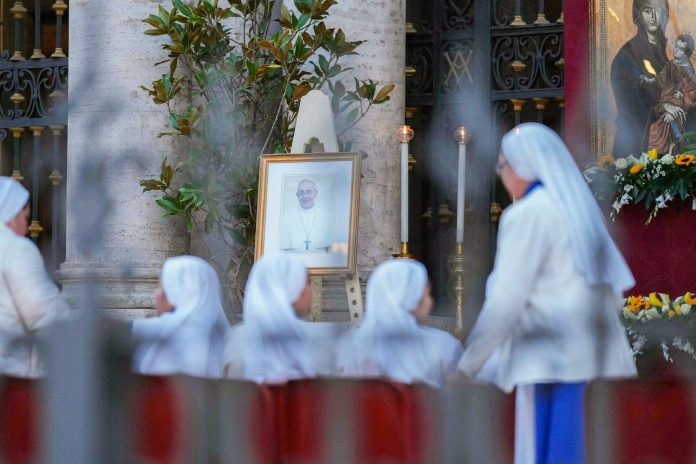On Saturday, Pope Francis became the first Pope in over 120 years to be buried outside the precincts of St. Peter’s Basilica.
“But over the course of 266 pontiffs, there have been numerous burial places,” says historian Donald Prudlo, Warren Professor of Catholic Studies at the University of Tulsa.
“When a Catholic thinks about the death of the Pope, they tend to gravitate to St. Peter’s,” he told Vatican News. “And it’s true that more than half of the popes in the Church’s history are laid to rest within Saint Peter’s,” dating back to the original church structure built by Constantine, the first Christian emperor.
But if Pope Francis’ choice to be buried outside St. Peter’s, and what is now Vatican City, “is surprising… it is certainly not novel,” Prudlo said.
In the past 200 years, two Popes—Pius IX in the wake of the Italian Risorgimento, and Leo XIII, his immediate successor—found their final resting places in Roman churches, St. Lawrence Outside the Walls and St. John Lateran, respectively.
And over the centuries, various Popes were laid to rest in different Italian cities, in France (during the period Popes resided at Avignon), and even as far away as Germany and Ukraine.
Prudlo notes that Pope Francis is the eighth Roman Pontiff whose final resting place lies within the walls of the Papal Basilica of Saint Mary Major.
“There were some from the Middle Ages, Honorius III and Nicholas IV,” he said, before becoming “a particular place of papal burial in the 16th century.”
Two popes in particular—Pius V, a Dominican; and Sixtus V, a Franciscan—have been joined by the first Jesuit Pope. “So in a lot of ways,” said Prudlo, it’s a place particularly friendly to the religious orders.”
However, he continued, the largest and oldest church in Rome dedicated to the Blessed Virgin Mary, is also marked by a special Marian devotion,” the devotion, so loved and valued by Pope Francis and by the Roman people, to the Icon of Mary under the title of “Salus Populi Romani.”
Pope Francis’ has been interred in a niche directly adjacent to the chapel housing the icon.
“The place of interment can be a symbol of the papacy,” says Prudlo. “This particular choice by Pope Francis is a very powerful one. It reassociates the Catholic Church with devotion to the Virgin Mary. It shows his closeness to the Roman people in his devotion to the Salus Populi Romani icon. And it reinforces the idea that it is not necessary that the popes should be buried at Saint Peter’s.”
At the same time, he added, the decision of so many previous popes to be buried in the Basilica dedicated to the first Pope, a “depositio ad Sanctus, being buried near the bones of Saint Peter himself, is also a very strong statement, a statement of the unity and perpetuity of the Petrine line.”
This article was originally published on Vatican News. All copyrights reserved to the Dicastery for Communication – Vatican News. Unauthorized republication by third parties is not permitted.









